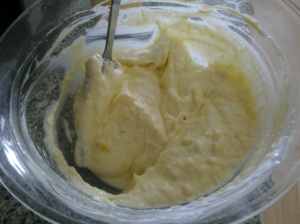 Another week, another Sri Lankan feast! This time, my husband cooked lots of rice and curry for our friends, and I made a dessert that we had a fair bit of when we were on honeymoon – watalappan, a set custard made with jaggery, coconut milk and lots of spices.
Another week, another Sri Lankan feast! This time, my husband cooked lots of rice and curry for our friends, and I made a dessert that we had a fair bit of when we were on honeymoon – watalappan, a set custard made with jaggery, coconut milk and lots of spices.
This is a great dinner party recipe, as it can be made in advance and left in the fridge until required. I used this recipe by Peter Kuruvita, who has also written a brilliant Sri Lankan cookbook that we use and that apparently is considered something of a bible by chefs in Sri Lanka!
I followed the recipe exactly, but I served it with toasted fresh coconut, in-season Indian mango and sliced Keralan bananas, which were the closest thing we could find to the bananas we ate a lot of in Sri Lanka. I also drizzled the plate with golden syrup as recommended by Kuruvita as a substitute for palm syrup.
The only tricky thing was baking the custards – they seemed to take longer than stated, but I reckon that’s just my oven rather than the recipe being at fault. They did eventually cook after I turned the heat up slightly.
The resulting dessert was rather wonderful – the sweet, spiced coconut custard combined with juicy mango and flavoursome bananas offered a perfect balance of flavours. It’s a great recipe to use if you’re planning a Sri Lankan or Indian feast and want an easy dessert that will impress!














